At London Speech Workshop our Interview Technique course goes much further than just how to answer the questions that are fired at you. We teach our clients how to remain calm and composed, how to use nonverbal communication and how to dress for an interview.
Interview attire is a tricky one - should you go super formal with a smart suit and polished dress shoes, or do you want to show off your personality with a pretty floral dress and leather boots? Our general rule of thumb when it comes to appropriate interview attire is that your job interview clothes should be in line with your own values. If the company values friendliness and you value professionalism, you might find there is a clash in what you should wear - and therefore it may not be the right company for you. You want to make sure you get the tone right depending on the company - this might mean jeans and heels for a PR company or a suit and tie for a bank.
In this blog we've collaborated with stylist Nicole Page. She specialises in helping busy professionals, both men and women gain clarity and confidence through clothes. Whether your professional attire is smart/casual or corporate she can help you achieve a wardrobe that will work for you and your lifestyle. Keep reading to find out her job interview dress code tips.
First and foremost... be yourself, be authentic and dress in a way that makes you look professional, comfortable and confident. Generally speaking dress like you already have the job. Studies show that it only takes seven seconds to make a good first impression and newer research shows that this may be shrinking to a mere 5 seconds.... so make it count!
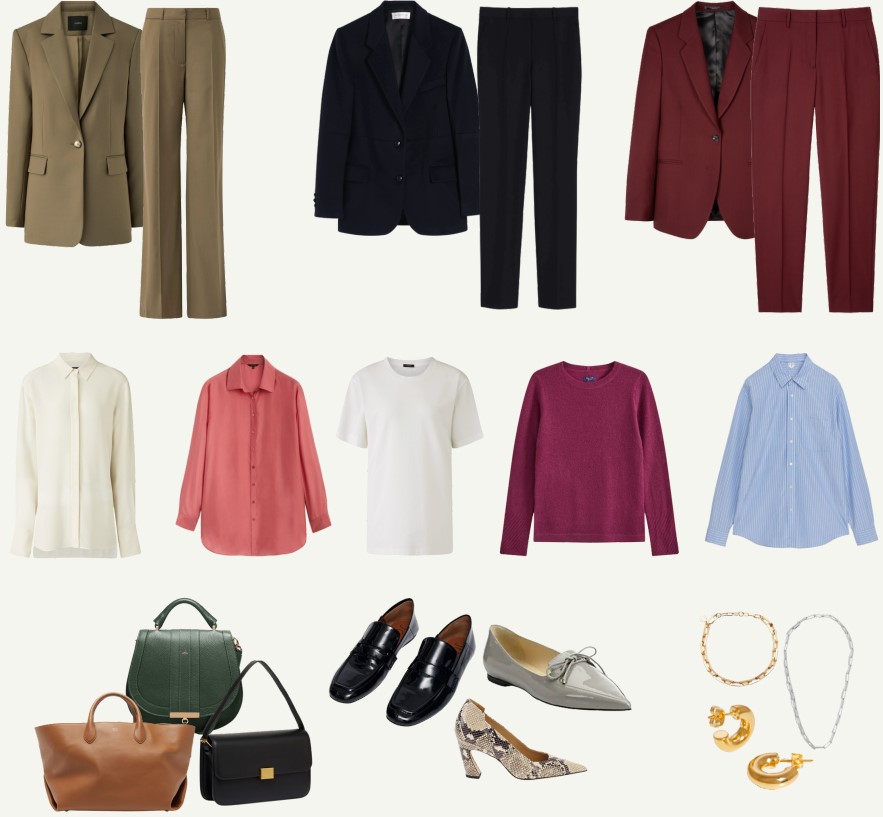
15 tips on what to wear for a job interview
- Invest in quality garments, pieces that have longevity. Invest in your
interview outfit. It tells a story, your clothes reflect your personality
and what's important to you. They say to other people that you care
about your appearance, you are professional, confident, self-assured.
You are a leader! - Being comfortable is key to feeling confident in an interview. But this
doesn’t mean jeans and a tee shirt! - If your clothes are ill-fitting, too tight, too short, too baggy or too loud
then your mind will be elsewhere and not on the interview at hand.
Not to mention your potential boss will be too distracted and not
concentrating on what you have to say! - It's about understanding how to look professional, but making it your
own. - Adding your own personal style to your interview outfit will give you
that individuality that gets you noticed. - It's going from a rather formal look to a more modern, current,
timeless, personalised look. - It's about an interview look that speaks volumes about who you are
but is still smart enough and professional enough for the interview. - This can be achieved through accessories, the cut of the garment, the
print, the fabric, an injection of colour and style. - Make sure your outfit is clean, pressed, current and modern.
- Stick to a neutral colour palette and incorporate an accent colour
BUT do not wear black (black is a dominant colour and can be rather
ageing too for certain skin tones). You can wear more colour once
you've sealed the position. Just keep it professional and modern for
the interview. Nothing too loud or garish. - If you are unsure as to what your best neutrals and best colours for
your skin tone are, then my advice would be to seek expert advice
(such as myself). You'd be so surprised as to what the right colours
can do for your skin, hair and eyes. Get this wrong and you might end
up looking flat or ill for the interview. - Pay attention to hem and sleeve lengths, get this wrong and the outfit
could swamp you or may look like it's been shrunk in the wash. - Keep accessories to a minimum.
- Wear cologne/perfume but do not let it overwhelm.
- Walk tall and proud.
Interview Attire For Women
The 90s power suit is back in full swing and the stilettos, nipped in blazer, pencil skirt and fitted poplin white shirt (with way too many darts sewn in for my liking) has gone out the office window, thank god! If you want to dress for success at an interview with a modern flair, then opt for a trouser suit OR a midi dress.
The Trouser Suit
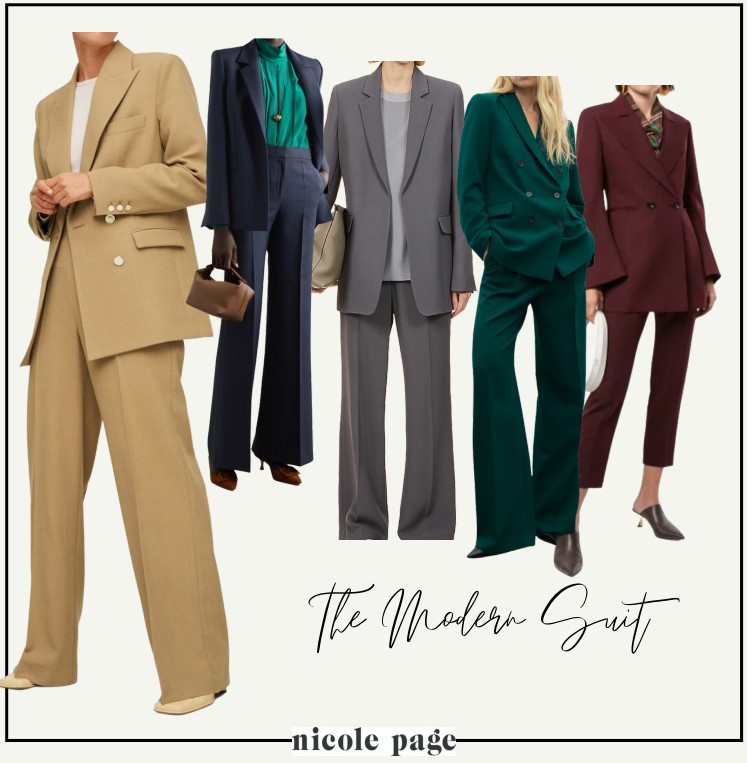
It's current, it's modern, it's high impact, it's a classic and suits everyone! (sorry for the pun!). The best thing about a trouser suit is that it can be worn as separates once you've nailed the interview!
Top tips
- Wear either a straight leg or wide leg (full length or even 3/4) and not
skinny (leave skinny for the weekends) And try double breasted or single
breasted to see what looks best. - Avoid linen as this will crush easily, opt for silk, crepe, wool and cotton.
- As mentioned before opt for a neutral palette for the suit but never an all black outfit or black and white. Instead of black, navy is a great alternative, it says that you are approachable without being too domineering which is what black can give off.
- Add a personal, modern touch such as a cone shaped heel, a block heel, square toe, kitten heel or simple flat loafers. Shoes are not just about the colour or the height. It is the material that really helps frame the outfits vibe! Avoid stilettos, and open toe sandals, save these for nights out!
- For accessories don't let them overwhelm, keep it simple. Such as a great pair of small to medium hoop earrings, a simple bracelet or necklace.
- Keep the suit plain with no pattern, you can save that for your shirt/blouse. But again keep the print simple and small, nothing too OTT.
- Do not wear a shirt/blouse that is low cut and transparent.
- An alternative to a shirt would be a crisp, modern tee or a cashmere sweater. But remember to keep the v neck short or opt for a crew neck and nothing too tight. Semi-fitted is key to a polished, smart, professional attire
- Regarding bags, it all depends on what you need to take to the interview. If you need to carry a laptop then choose a leather or leather trim tote bag. But if all you need is your phone and wallet then choose either a small to medium handbag in a neutral colour.
The Midi Dress
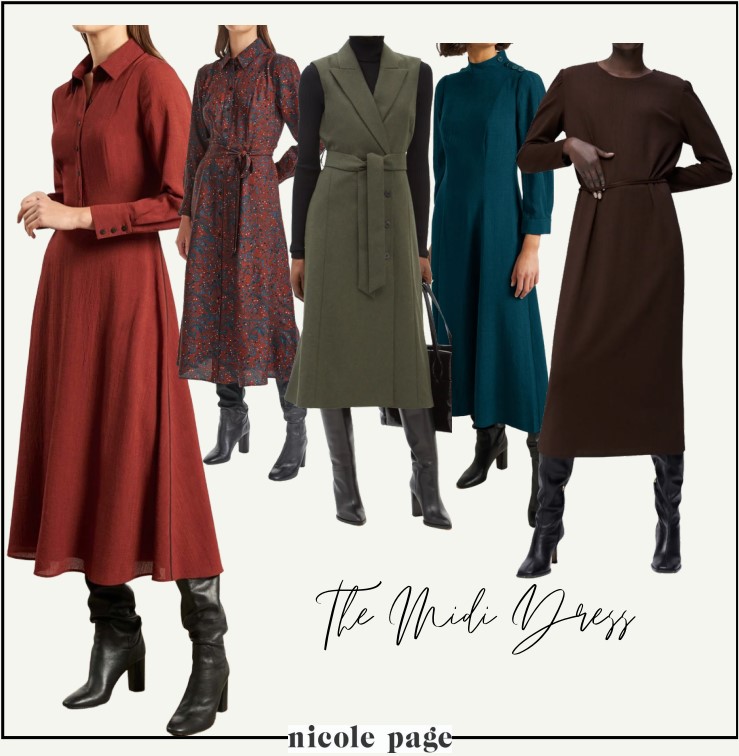
- Either choose plain or print. A print will give the dress some character, but keep it within the neutral colour palette and avoid overly bright colours.
- Choose a fluid, modern style rather than a very out-dated, corporate fitted style. You know the ones I'm talking about with the little cap sleeve, square neckline, hemline just under the knee and more often than not in black!
- Pair the dress with a great pair of knee high boots, ankle boots, kitten heels or leather loafers. And for the warmer months add a fabulous winter coat or blazer.
- If you don't want to show any skin then opt for fine semi sheer tights, the brand Falke is my go-to.
- Pair your shoes with the same coloured tights for instant leg length.
Sometimes rules are meant to be broken, instead of matching your bag with your shoes, for a modern look, choose a different contrasting colour or a different tone.
Interview Attire For Men
The Formal Suit
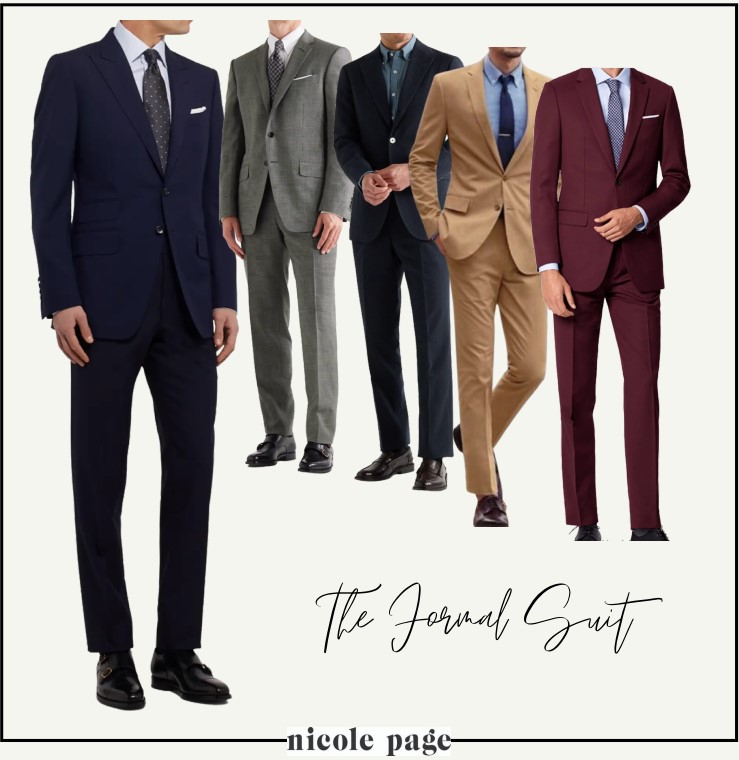
It's a classic, it's timeless. It's professional. It speaks volumes about who you are and how you hold yourself.
Top tips
- Either choose from a plain, single breasted suit in your best neutral or a fine check or pinstripe. Choose either a navy, grey, burgundy, khaki or camel but not black. Break it up with a white or blue shirt. Avoid the grid check shirts that you see on everyone else. Why blend in, it's an interview after all, you want to be noticed and remembered for the right reasons.
- Avoid linen and corduroy. Linen will crush easily and corduroy is too casual, opt for wool or cotton.
- Pay attention to hem lines. Make sure they don't swamp your frame or are on the short side. If you have the budget my advice would be to get a suit tailor made, there is nothing like a suit that has been cut to your measurements or buy off the peg and if anything needs to be altered then take it straight to the tailor. A lot of selected men's stores offer alterations, so make sure you find this out.
- Invest in a great pair of leather brogues, a silk or knitted tie, leather belt and socks.
- Keep your accessories to a minimum such as a watch and if you choose to take a bag, then keep it simple like a leather or leather trim briefcase or a cross body one, but do not take your sports bag or a backpack.
The Casual Suit
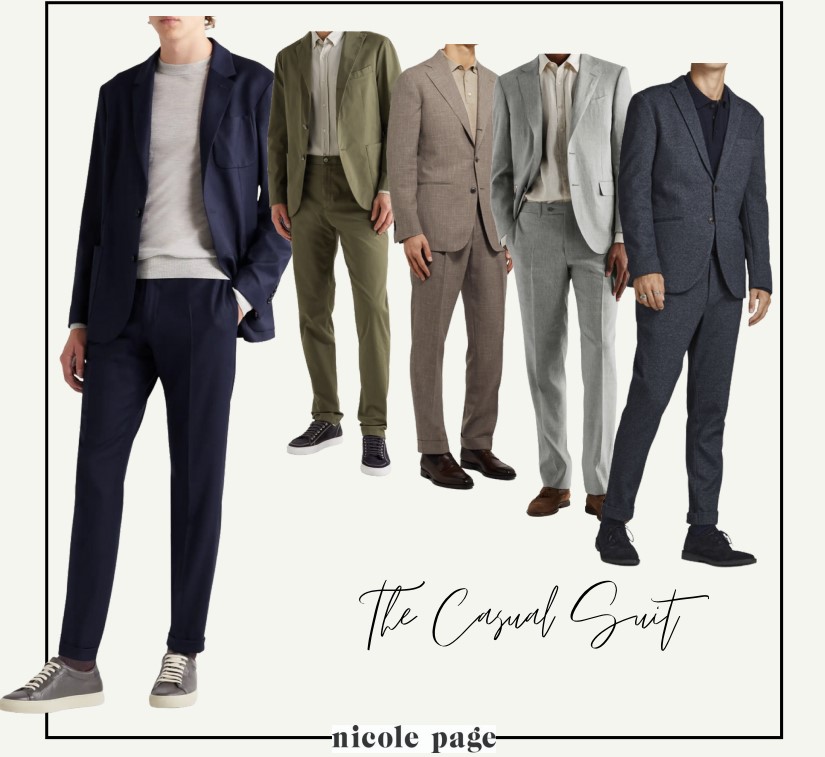
For those attending an interview in a less corporate environment, opt for a more casual suit. It's still professional and very polished but without the tie and formal shirt.
- Either choose from a plain, single breasted suit in your best neutral or a fine check or pinstripe. Either opt for an unstructured shoulder line or
structured, depending on your preference. Choose either a navy, grey,
burgundy, khaki or camel but not black. - Choose either a casual shirt, a crisp new t-shirt crew neck style, a fine merino wool sweater, a long sleeve polo shirt or a henley.
- Invest in a great pair of leather brogues, suede chukka style boots or suede or leather trainers. Make sure your trainers are new, hence clean and are not your runners!
- Due to the casual nature of this suit, I would recommend a more casual belt rather than a more formal one or simply no belt at all and for a bag either a briefcase or a leather or leather trim back pack.
Remember it comes down to personal taste BUT keep it professional.
To read Nicole's full recommendations on this topic, click here to download her PDF which is filled with well-tailored interview outfit tips for men and women.
Want to make sure you ace your next interview? Click here to find out about our job interview training courses.


